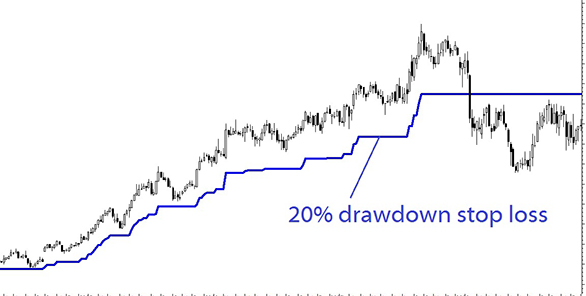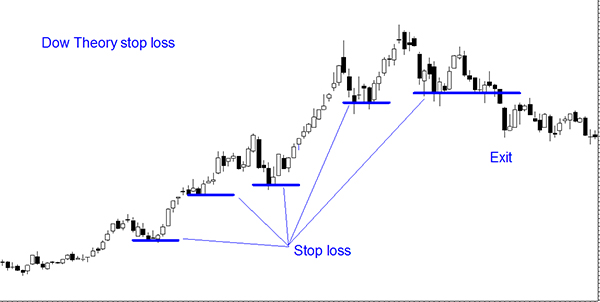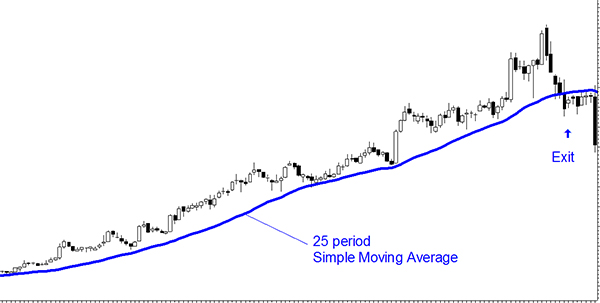What is a stop loss
A stop loss can't predict the future but it can protect you in the future
This article explains what a stop loss is with some examples of various different types

Essentially, a stop loss is a pre-determined price at which to exit a position in order to limit your loss (or protect your profit). Therefore, a stop loss is all about the exit strategy in your trading plan.
There are many types of stop losses. Each uses a different method for setting where the stop loss sits in relation to the current price. Choosing which type to use depends on the goal of your trading strategy.
For example, for a long term trend trading strategy it makes sense to use a wide trailing stop loss to allow the price to rally and retreat as the trend rises over time, but is triggered when the trend ends.
Whereas for a short term rally trade, a tighter stop loss will hug the price activity and not to give back too much profit when the rally finally ends.
Let's look at a few different types of stop losses
-
Drawdown stop loss
The first method we'll look at is a drawdown stop loss. Alan's Blue Chip Report uses a 20% drawdown where the stop loss is placed 20% below the highest closing price in the last 12 months.

You can see how the stop loss moves up each time the price activity makes a new high. Notice, however, that the stop loss doesn't fall when the price activity retreats, thus locking in profits as the trend progresses. This is an important feature of a stop loss.
A 20% drawdown stop loss method is suitable for long term trending blue chip shares since the stop loss sits wide of the price activity allowing the trend room to develop over time.
-
Dow Theory stop loss
Another method uses Dow Theory - the sequence of highs and lows. Here the stop loss is placed under the most recent low. Each time a higher low is made the stop loss is moved up. Thus the stop loss trails the price activity in a similar fashion to the drawdown method, except, in this case, the stop loss touches the price activity. This stop loss, being closer to the price activity, would suit medium to long term trending shares.

When using Dow Theory some discretion is required by the chartist to identify new significant higher lows as they occur for the purposes of moving the stop loss. This can reduce the mechanical nature of a stop loss. If you have some concern about executing an exit without wavering then you may wish to overlook this method.
-
Curve fitted moving average
Another stop loss method is using a curve fitted moving average. This is done by adjusting the period of the moving average until it fits snugly under the previous trend. In the chart below a 25 simple moving average fits nicely. You can watch Alan demonstrate how to curve fit a moving average in this video

-
Chandelier stop loss
The last method we are going to look at in this article is the chandelier stop loss. This method is used in Alan's Breakout Trading strategy. The chandelier approach was developed by Chuck Le Beau, and as the name suggests the chandelier stop loss hangs down from the price activity. In the breakout trading strategy the stop loss hangs from the highest high of the trade by a displacement of 2 times the ATR(17). ATR stands for average true range and is explained in the breakout trading manual on page 15.

The Breakout Trading strategy is designed to capture strong rallies following a breakout from a point of agreement. For this reason a chandelier stop loss is suitable as it is instantly reactive to any advance in price and will minimise giving back profit as the rally extends.
There are many more type of stop losses that would suit other styles of trading and investing such as Daryl Guppy's Count Back Line (CBL) used regularly in ALAN HULL TV, and the Range Indicator used in the Active Investing strategy. You can watch more about these stop losses in the following videos...
